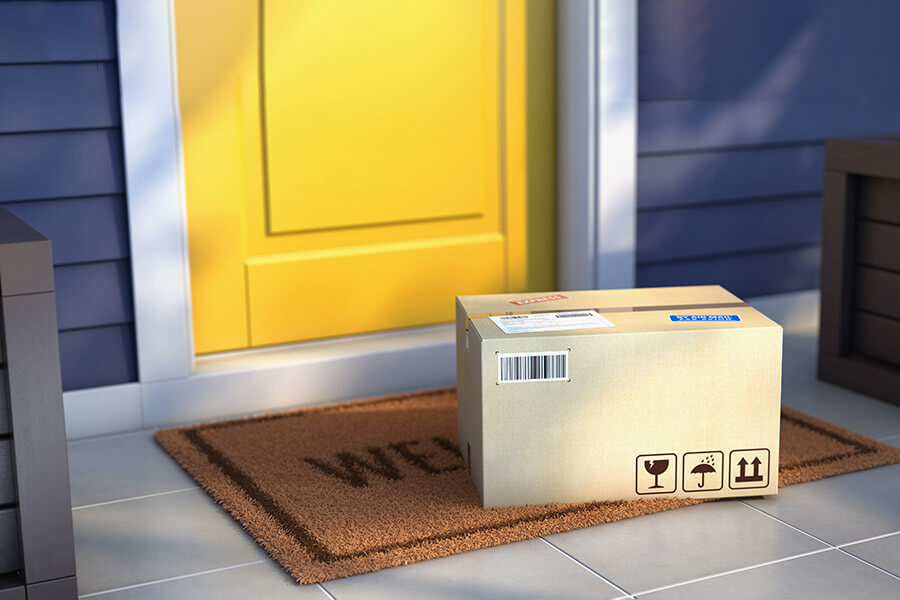eCommerce shipping best practices for SMBs
Building your eCommerce shipping strategy requires you to implement best practices so your team can work more efficiently and keep customers happy. Here are a few shipping best practices to keep in mind:
Packaging your eCommerce products for shipping
Before you can ship your eCommerce products you need to make sure they are packaged correctly so that they can arrive safely to your customers door. Common eCommerce packaging materials include:
- Boxes
- Mailer bags
- Satchels
- Packaging peanuts
- Void fill
- Tissue paper
- Bubble wrap
- Hex wrap
- Foam
- Tape and tape dispensers
- Shipping labels
- Fragile stickers
You can buy eCommerce packaging supplies and materials in bulk to save money from suppliers and wholesalers in Australia such as eBPak, Stanley Packaging and Hero Packaging or find local suppliers in your area.
Labelling your eCommerce packages for shipping
When labelling your eCommerce parcels for shipping, there are a few things to keep in mind to ensure your parcel is labelled correctly so that your customers receive their order intact and have a good experience:
- If your parcel contains fragile goods that are prone to breakage make sure you label the parcel with a fragile sticker so that fulfilment staff and couriers take extra care handling the parcel
- If the contents of your parcel contain perishables like food or items that have a short shelf life or are prone to melting like candles, make sure you label your parcel with a “keep away from heat” sticker
Labelling your eCommerce packages is easier than ever with the rise of digital eCommerce shipping solutions. In many cases, you can print your shipping labels directly from your eCommerce platform or integrate an eCommerce shipping solution such as QuickBooks Shipping Manager which allows you to print FedEx, UPS and USPS shipping labels from within the QuickBooks platform. Our Shipping Manager pre-fills the shipping labels with your customers address information from QuickBooks Invoice or Sales Receipt forms. Our Shipping Manager even allows you to schedule pickups and track your packages within your QuickBooks account.
Automate your eCommerce shipping processing
SMBs don’t often have the luxury of dedicated shipping teams and departments; however, eCommerce shipping solutions such as automation tools allow small businesses to remain competitive with larger brands. SMBs can integrate eCommerce shipping software with their eCommerce platform to effectively automate shipping and fulfilment tasks, reducing the number of back-office processes and minimising errors.
Shipping technology can easily level the playing field for small businesses looking to compete with larger online retailers. Rather than completing these processes manually or building software, small businesses can use eCommerce platforms like QuickBooks to simplify, automate and increase operational efficiency.
Use the right shipping technologies
Today, customers expect to track the details of every stage of the delivery process in real time. With eCommerce shipping solutions, small businesses can provide transparency across every part of the buyer’s journey. This increased visibility isn’t just beneficial for the customer but beneficial for businesses as well. Shipping technologies and analytics have made it much easier for businesses, regardless of size, to monitor and streamline shipping at every stage. Your team can also be more accountable and react quickly to delays, errors or damages that occur during the shipping process.
Multi-carrier shipping is also key for SMBs looking to compete with major eCommerce retailers. By offering shipping services from multiple shipping companies, SMBs have the flexibility to offer the best rates and provide fast shipping, competing with large online retailers.
Finally, as eCommerce, or mobile commerce, continues to accelerate, omnichannel strategies are essential for SMBs looking to compete with major retailers, particularly when it comes to shipping. SMBs have to accurately track and fulfil orders across online shops, marketplaces and social commerce to offer customers a seamless online shopping experience.





















